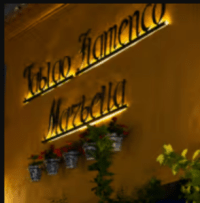The Caganchos were three gypsy blacksmiths who were born in Triana, Seville, during the nineteenth century. These brothers are remembered for their antiquated style of singing, especially with the primitive forms of flamenco like the martinetes and siguiriyas.
They belong to the same family as Diego el Fillo, a common family with an artistic background full of flamenco musicians and bullfighters.
Their father was Antonio Cagancho, a singer of great worth who appeared in Serafin Estébanez Calderón’s account of the gypsy life in Triana, Escenas andaluzas, a book that recounts some of the earliest memories of flamenco Antonio, Joaquín, and señor Manuel Cagancho, were all legends in their own time, but it was Manuel who was said to have made the biggest impact with his wonderful siguiriyas.
Señor Manuel Cagancho inherited the siguiriyas of El Fillo, and his trance-induced style of singing was said to have made people who heard him behave in the most unusual manner. The Caganchos performed their flamenco in the forges where they worked and even though they lived through the golden age, they never dreamed of commercializing their song.
Without scripts or structured compositions, the Flamenco artists let themselves be carried away by improvisation and the passion of flamenco. Witness dancing and singing, where the a cappella voice, the guitar chords and the rhythm of the dancers will fill the stage. Dining optional. Tickets for Flamenco Show at Tablao Flamenco in Marbella.
Manuel, and his two brothers, who were referred to as Tio, (uncle) rarely ever crossed over the river into Seville, happy to simply perform their cante for just a few friends in the forges of Triana.
The Caganchos, along with other singers from Triana like Juan Pelao, a bronze skinned gypsy, refused their art to anyone outside their own small circle. They would congregate in the backroom of a small grocery shop named Casa Rufina to sing the most orthodox styles of cante, thus keeping the secret of their song hidden away in Triana.
It is believed that no amount of money could have tempted these people into singing for a paying audience. Instead, they reserved their flamenco only for those who they saw fit to hear it. Their only payment would be the spectator’s appreciation and gratitude, which was displayed by riotous jaleo that would ring from the backroom where they would sing until they were overcome and unable to continue.
Manuel Cagancho did record two or three siguiriyas on the old wax cylinders, ( a “prehistoric” style of recording) which have since been transferred on to disc, although I would imagine that the quality would be far less superior to witnessing him in the natural surroundings of his forge. His style of singing was free from any ornamentation, an ancient, eerie old chant, which has since been preserved by Juan Talega, who recorded a few of Caganchos siguiriyas in the 1970s. The siguiriya is the most profoundly emotional element of flamenco; it is a gypsy cante that lies at the very heart of the flamenco song.
The Caganchos are considered to be the most important figures in the creation and preservation of the Triana school of cante, a style that is slowly becoming extinct, demolished like much of Triana itsself, by modern trends and practices.
